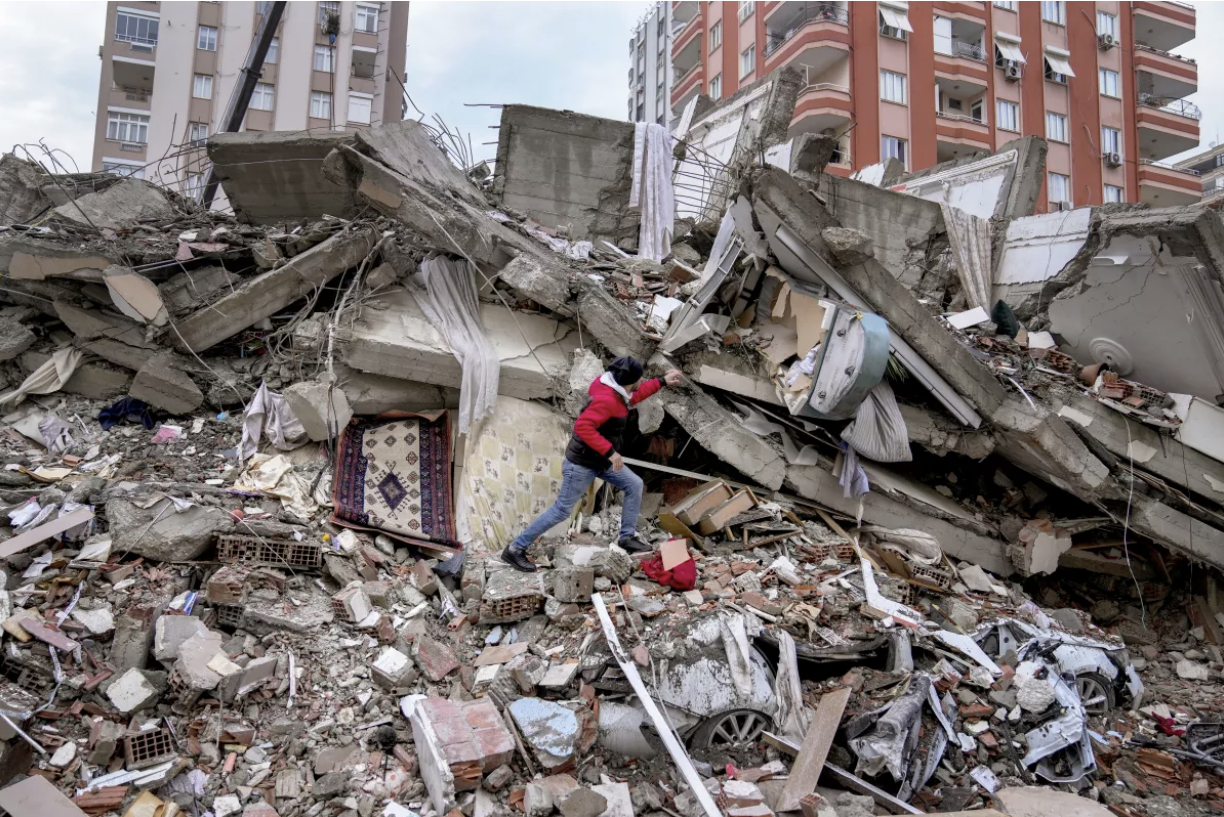 A man searches for survivors in a destroyed building in Adana, Turkey, in the aftermath of the deadly quake. | Photo Credit: Khalil Hamra / Associated Press
A man searches for survivors in a destroyed building in Adana, Turkey, in the aftermath of the deadly quake. | Photo Credit: Khalil Hamra / Associated Press
Sunrise on February 6th, 2023, revealed the aftermath of one of the deadliest earthquakes of the century. The magnitude 7.8 event struck along the East Anatolian Fault near the Turkey/Syria border at 4:15am local time, to devastating consequences. But what made it so devastating?
The quake and its largest aftershock–a magnitude 7.5–were relatively shallow. At circa 11 and 6 miles deep, respectively, the earthquakes’ proximity to the surface greatly intensified the shaking and destruction.
The makeup of the ground where the earthquake hit also exacerbated the damages; the region’s softer, sedimentary soil meant that the structures sitting on them experienced more shaking than those anchored on firmer ground.
South Turkey’s softer soil structure is mirrored in the Los Angeles Basin. Should the San Andreas Fault rupture, the effects on densely-populated Los Angeles may be similarly devastating.
“It’s basically tofu versus rock,” said An Yin, a professor of geology with UCLA EPSS, to the LA Times. “If you build a house drilled into solid rock versus a house… drilled into tofu, which one are you going to trust? Of course the rocks.”
Read more at: https://www.latimes.com/science/story/2023-02-07/what-makes-an-earthquake-deadly-these-are-the-things-that-matter
EPSS professor Caroline Beghein also weighed in, stating to Newsweek that the increased destruction from this quake may “…be partly explained by the fact that [the East Anatolian Fault] ruptured over a much longer segment than previous quakes as more energy gets released when the fault ruptures over larger distances.”
This specific fault had previously caused quakes in 1513, 1872 and 1893, likely building up stresses on the fault line. The most recent quake ruptured along all the portions that activated during those historic quakes, combining to affect a far greater segment of the fault and generate the catastrophic February 6th quake.
Read more about the East Anatolian Fault and its past and future effects here: https://www.newsweek.com/turkey-earthquake-cause-thousands-years-previously-faults-1779763
